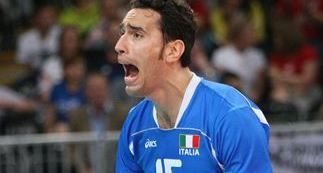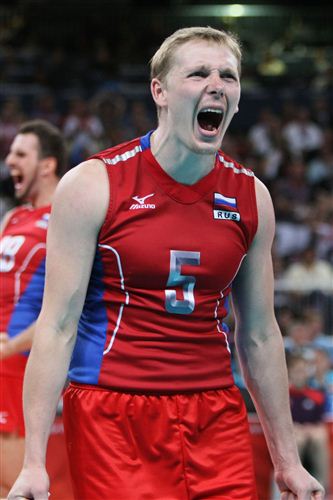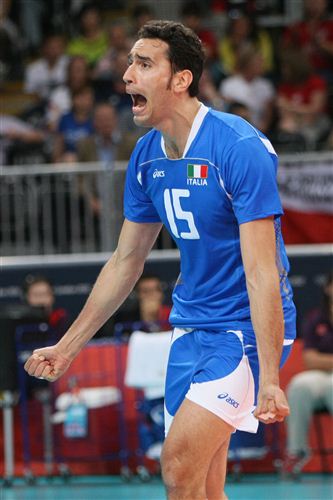April 22nd, 2013
“The International Volleyball Federation (FIVB) has announced a postponement to the implementation of the Overhand Reception Rule on Monday.
The FIVB Board of Administration decided to suspend the implementation of Rule 9.2.4 of the Rules of the Game pending further testing in official competitions, as the impact of the above-mentioned Rule has so far not been as successful as expected.
The Board made the decision during its meeting held at the FIVB headquarters in Lausanne in April after the FIVB Congress in September, 2012 had originally approved the change.
FIVB Board of Administration decision:
1. As the FIVB Board of Administration has the competence and obligation to deal with urgent and exceptional matters in the spirit of the Constitution and in the general interest of the FIVB, the implementation of Rule 9.2.4 of the Rules of the Game to be suspended pending further testing in official competitions, as the impact of the above-mentioned Rule has so far not been as successful as expected.
2. The Rules of the Game Commission to perform the required tests and compare them with the data already received, in order to determine if the new rule achieves the purpose for which it was created, reporting back to the FIVB Board of Administration.”
Yayyyyyyyyyyyyyyy!
Click here to read The Rules of the Game 2013-2016 – Volleyball
Click here to read The Rules of the Game 2013-2016 – Beach Volleyball
Thoughts?
April 15th, 2013
A controversial rule imposed by the FIVB in September 2012 will no longer be used. The rule forbids the reception of the serve with both hands making a ring and touching the ball simultaneously with the fingers aka overhand pass.
Players can now pass the ball any way they’d like! Yay!
Many coaches criticized the new rule just like Cuban Volleyball Federation president Eugenio George who thinks that the rule would affect the quality of the game. “Volleyball is becoming faster, and limiting the options goes against the quality of the game.” says George.
“I think this is very good. The chance wouldn’t be good for the game.” -Dominican Republic’s Marcos Kwiek.
WAIT!
Goodbye 25 points???
Rumor has it that the FIVB plans to use a new scoring system this year, ie the “21 rally point scoring system”. Sets will now be played up to 21 points and each team will still get 2 technical timeouts. This will be used in this year’s CEV European League.
It’s going to be a quick match if this is the case.
We DO NOT LIKE it at all!
Stick with the 25 points! These new changes are killing the sport!
Thoughts?
December 31st, 2012
Don’t forget these NEW or UPDATED FIVB Rules effective January 1st, 2013:
Rule 4 Teams:
4.1 Team Composition
4.1.1 For the match, a team may consist of up to 12 players, plus:
* Coaching Staff: one coach, a maximum of two assistant coaches,
* Medical Staff: one team therapist and one medical doctor.
Only those listed on the score sheet may normally enter the Competition/ Control Area and take part in the official warm up and in the match.
For FIVB, World and Official Competitions the medical doctor and physiotherapist must be accredited beforehand by the FIVB.
Rule 9:
9.2.4 It is a fault, during the reception of service, to make a double contact or catch using an overhand finger action.
Rule 12 Service:
12.5 Screening
12.5.1 The players of the serving team must not prevent their opponent, through individual or collective screening, from seeing the server or AND the flight path of the ball.
12.5.2 A player or a group of players of the serving team make(s) a screen by waving arms, jumping or moving sideways during the execution of the service, or by standing grouped to hide the server AND the flight path of the ball.
Rule 19 The Libero Player:
19.3.2 Replacements of players
19.3.2.9 An illegal Libero replacement can involve (amongst others)
– No completed rally between Libero replacements
– The Libero being replaced by a player other than the regular replacement player or the second Libero
An illegal Libero replacement should be considered in the same way as an illegal substitution:
Should the illegal Libero replacement be noticed before the start of the next rally, then this is corrected by the referees, and the team is sanctioned for delay.
Should the illegal Libero replacement be noticed after the service hit, the consequences are the same as for an illegal substitution.
19.4.1 The Libero becomes unable to play if injured, ill, expelled or disqualified. The Libero can be declared unable to play for any reason by the coach or, in the absence of a coach, by the game captain.
19.4.2.2 If the Acting Libero becomes unable to play, he/ she may be replaced by the regular replacement player or immediately and directly to court by a re-designated Libero, If the Libero is not on court when declared unable to play, he/ she may also be the subject of a re-designation. The Libero declared unable to play may not play for the remainder of the match.
Rule 21 Misconduct and its Sanctions:
21.1 Minor Misconduct:
Minor misconduct offences are not subject to sanctions. It is the first referee’s duty to prevent the teams from approaching the sanctioning level.
This is done in two stages:
Stage 1: by issuing a verbal warning through the game captain;
Stage 2: by use of a YELLOW CARD to a team member. This warning is not a sanction but a symbol that the team member (and by extension the team) has reached the sanctioning level for the match. It has no immediate consequences, but is recorded on the score sheet.
21.6 Sanction cards:
Summary of Misconduct and cards used
Warning:
Stage 1: no sanction – symbol verbal warning
Stage 2: no sanction – symbol Yellow card
Penalty: sanction – symbol Red card
Expulsion: sanction – symbol Red+ Yellow cards jointly
Disqualification: sanction – symbol Red + Yellow card separately
December 18th, 2012
From the FIVB:
The International Volleyball Federation (FIVB) is pleased to announce the publication of the updated Rules of the Games documents as approved by the FIVB Congress.
“A major consideration in the deliberations of the Rules of the Game Commission was the integration of beach volleyball and volleyball under a single umbrella, with a coming together of common themes,” Rules of the Game Commission president Sandy Steel said.
To bring beach volleyball and volleyball into harmony when it comes to sanctioning, volleyball has reverted to the previous use of the yellow and red cards.
For volleyball, libero freedom is extended to give the coach better opportunities to generate the best team performance while reception technique was modified to encourage longer rallies.
For beach volleyball, the captain’s role has been strengthened while the net rule, which has been successful in volleyball, is now to be extended to beach volley. Its purpose is to prevent artificial stoppages and allow longer rallies to be played.
Click HERE to read the Rules of The Game Volleyball 2013-2016
Click HERE to read the Rules of The Game Beach Volleyball 2013-2016
October 16th, 2012
Looks like the more changes, the merrier!
We’ve read from another source that aside from the reported change mentioned below which is effective next year, the FIVB plans to also update the rules regarding “screening on service rule”:
“The worldwide membership body that comes under the Federation of International Volleyball (FIVB) all agreed that the screening on service rule needed to be expanded to include individual and team restriction of the “view of the server” as a violation, or alternatively, restriction of the view of “the flight of the ball” as a violation.”
The Bahamas Volleyball Federation President Don Cornish shares his thoughts on the changes:
“During the London Olympics, which was one of the testing grounds, they actually looked at all the things that might have affected the game or slowed it down per se. There was improvement in the jump serve and we all know the velocity has caused players to move from the overhand reception.
Not too many persons want to put their hands on the ball because of the velocity of the ball. The hard driven ball on the service has caused people to go back to the underhand or the bump and that has created a better quality pass.
Generally people are happy that volleyball isn’t getting to a point where people were catching the ball and throwing it back. It got really bad because some players got really good at catching the ball, so the whole idea of it, when the rules were changed initially was to allow for the hard driven balls in service not to become or counted as a fault. It was intended to make volleyball a better television sport.
People got a little bored watching the game because of all the interruptions we used to have with the side-out and other stuff. There were too many time-outs, too many breaks and the referees needed to focus more on the game. Since then play has improved. The standard has improved, and the quality of play, especially in the men’s game.
People don’t generally notice that the referees are blowing their whistles because the transition is so fast, so the whole idea is to get away from poor defense and making persons get back into quality passing and all that other good stuff. There were absolutely no objections from any of the delegates from the 200-plus countries regarding that change.
As far as the screening rule is concerned, I think that is more of a concern because that is primarily the official’s decision. If Imake a double fault, or have a bad reception that is pretty obvious because the projectory of the ball changes.
Naturally that is an easy call to make, but if you are saying that an individual and team on the opposite side is screening and obstructing the vision to the ball, that is something that needs to be considered. What it says now that you must have a better understanding of where I?am on the court, and whether or not I?deliberately obstructed the view of the server.
That is going to be a difficult call to make. It is purely discretionary and it is, in my mind, more difficult to manage going forward.
The first step to the new adjustments on the local end is to ensure that all of the officials are brought up to speed on the new changes. It is important for all players and coaches to know so when the officials make the calls it will not create a problem.”
Thoughts?
October 3rd, 2012
Oh Nooooooooooooooooooo!
Luckily the new changes we are hearing are only “rumors” for now. We have to wait until 2013 if the FIVB will indeed a couple of indoor volleyball rules.
Berlin Recycling Volleys’ head coach, Mark Lebedew, has written about this in his blog and we got his permission to share this:
The Rumors
“One of the great strengths of volleyball compared to other sports has been its willingness to tinker with its rules in order to make the game more attractive to spectators and the media. For the most part, those rules changes have benefited the sport. To me, volleyball has become a much more entertaining and compelling event because of the changes that have been made.
In the last couple of months I have heard rumors that more rule changes are on the cards / being considered for implementation after the Olympics. The main one of these is that the double contact rule for the first contact will be tightened but ONLY on service reception. If the rule change is approved, service reception taken overhead (in a setting motion) must be clean, that is, a double contact will no longer be allowed bringing it in line with setting on the second and third contact. However, the rules for every other first contact (defence, free balls etc) will remain the same. The stated reason for the change is to bring the rules for indoor volleyball closer to beach volleyball. Although I’m not so sure.
Even after this change, there are still multiple areas where ball handling rules differ between indoor and beach volleyball. It seems to me the rule is simply to make reception more difficult, particularly on float serves. The most recent Mikasa ball floats much more than previous versions (and other brands) and the float serve is difficult to receive. In men’s volleyball however, the liberal ball handling rules have negated the impact of the new ball. In that context, it seems the objective of the new rule is to make reception (and hence attack) more difficult. That makes sense and fits with the majority of the rule changes that have taken place over the years.
In the short term, the quality of reception will be negatively affected. In the medium term, there will be some tactical adjustments (three receivers become two?). In the longer term, there will be a change in the type of players selected (reception becomes more important, therefore smaller receivers become more important?).
However as always, one must consider the law of unintended consequences and I can imagine that will be in how games are officiated. There is already confusion among spectators as to the difference between a double contact and a held ball. There is already confusion among players about the difference between a double contact and a held ball. As for referees, I cast my mind back to the countless times up until only recently when referees blew for a double contact and hurriedly changed their signal to that for a held ball. And now we add confusion about which first contact can be a double contact or a held ball.
I guess time will tell…”
Per Coach Mark:
“I think the FIVB has mostly done a good job with rule changes. I think the game is better than it was. but i’m not sure about this. it feels like a step backwards.”
We totally AGREEEEEEEEEEE with him!
What about you?
THOUGHTS?
We strongly recommend you to check Coach Lebedew’s blog site. Click HERE now!
(images: FIVB)




12 Comments
Leave a Reply2 Pings & Trackbacks
Pingback: Proposed FIVB rules changes ahead | Coaching Volleyball
Pingback: Overhand reception in indoor volleyball | CL-UAT